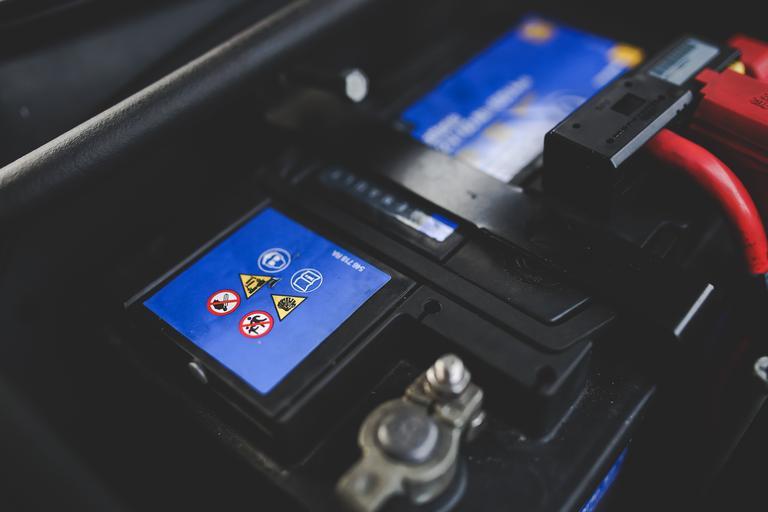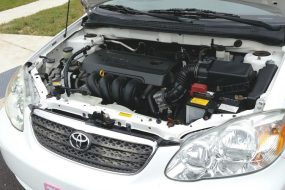
Battery disconnection has always been one of the best ways to test, reset, and get things running again in most vehicles. You can simply disconnect the negative or both positive and negative terminals of the battery to get to the root of your problem.
But the question is, can you disconnect the battery to test an alternator? Is this method still feasible? If it is, how can you test the alternator by disconnecting the battery?
How to Test Alternator by Disconnecting Battery
To test the alternator by disconnecting the battery, follow the procedure below:
- Step 1: Park Your Car in a Safe Place: Your safety first. Ensure that the vehicle is parked in a safe location where it will be feasible for you to do the work without interruption. You can also wear appropriate safety gear, such as gloves and safety glasses.
- Step 2: Start the Car and Let It Idle: The next thing to do is to start the engine and let it idle.
- Step 3: Remove the Battery Cables: Locate the battery terminals and remove the negative and positive cables. Ensure to do this while your car is still on.
- Step 4: Observe the Engine: While the engine is running, observe its behavior. If the engine continues to run smoothly and there are no issues with electrical components, the alternator is charging.
- Step 5: Check Electrical Components: Turn on various electrical components, such as headlights, radio, and air conditioning, to see if they function properly. If the alternator is working correctly, these components should continue to operate even with the battery disconnected.
- Step 6: Reconnect the Battery: Once the test is complete, reconnect the battery terminal cables.
When the test is completed, you should be able to get the right answer you are looking for. However, it’s important to note that disconnecting the battery while the engine is running is not a recommended method to test an alternator.
This practice, also known as the “battery disconnect test,” was more common in older vehicles, but it is generally not advisable for modern vehicles due to the potential for damage to the electrical system.
When you disconnect the battery while the engine is running, it can lead to voltage spikes. The alternator is designed to regulate voltage output based on the battery’s state of charge.
When you disconnect the battery, the voltage can spike, potentially damaging sensitive electronic components such as the engine control module (ECM), sensors, fuses, and other electrical devices.
Moreover, modern vehicles have built-in voltage regulators that help maintain a steady voltage output, disconnecting the battery can lead to a sudden increase in voltage, potentially damaging the alternator’s voltage regulator.
Best Ways to Test an Alternator
Instead of the battery disconnect method, here are safer ways to test an alternator:
1. Use a Multimeter
You can use a multimeter to measure the voltage at the battery terminals with the engine running. The voltage should be between 13.5 and 14.5 volts if the alternator is working correctly.
“Testing an alternator using a multimeter is a more accurate and safer method than disconnecting the battery while the engine is running”.
- To use the multimeter for the test, ensure the engine is on.
- Turn the multimeter on and set it to measure DC voltage.
- Connect the multimeter’s red (positive) lead to the positive terminal of the battery.
- Connect the black (negative) lead to the negative terminal of the battery.
- Note the battery voltage. A healthy battery should read around 12.6 volts.
- Keep the engine running and move the red lead to the positive terminal of the alternator.
- Move the black lead to a good ground on the vehicle, such as the negative battery terminal or a bare metal surface.
- The alternator output voltage should be between 13.5 and 14.5 volts. This indicates that the alternator is charging the battery.
- Turn on various electrical components, such as headlights, radio, and air conditioning, to put a load on the electrical system.
- Recheck the alternator output voltage. It should remain within the specified range. If it drops significantly, the alternator might be struggling to keep up with the demand.
This is to say that if the alternator output voltage is between 13.5 and 14.5 volts, and it remains stable under load, the alternator is likely functioning correctly. However, if the alternator output voltage is consistently below the specified range, it may indicate a problem with the alternator, such as a faulty voltage regulator or a worn-out alternator.
If the alternator output voltage exceeds 14.5 volts, it may suggest a malfunctioning voltage regulator, leading to overcharging of the battery. You can also measure the voltage of the battery before starting the engine and using the multimeter and then again with the engine running. If the voltage increases, the alternator is likely charging the battery.
2. Listen for Unusual Noises
Strange noises such as grinding or whining may indicate a problem with the alternator. I’ve experienced this problem in the past with my Lexus IS350. It happened that my battery kept draining for days. The highest my battery can stay before dying is 4 days and on that 4th day, it will not start but can unlock the car door.
At one point, I noticed a whining noise anytime I parked my car and turned the engine off. I also noticed that anytime I disconnect the battery, the noise will stop. If I reconnect the battery, the noise will start again.
In the end, it was my alternator that was draining my battery because of a wrong wire connection. It was fixed within 3 minutes and since then I have left my car for 7 days and it started without issues.
3. Inspect the Drive Belt
A loose or damaged drive belt can affect the alternator’s performance. Make sure the drive belt is in good condition and properly tensioned.
Conclusion
While I strongly advise against disconnecting the battery while the engine is running due to the potential for damage to the vehicle’s electrical system, it’s important to note that the method works but is not conducive for cars made these days.
Modern vehicles are equipped with sensitive electronics that can be damaged by sudden voltage spikes resulting from disconnecting the battery. If you still choose to perform this test despite the risks, then ensure to do it the right way following the procedures explained in this article.




